The Bourgogne Franche-Comté region is waiting for you in their famous Burgundy sites
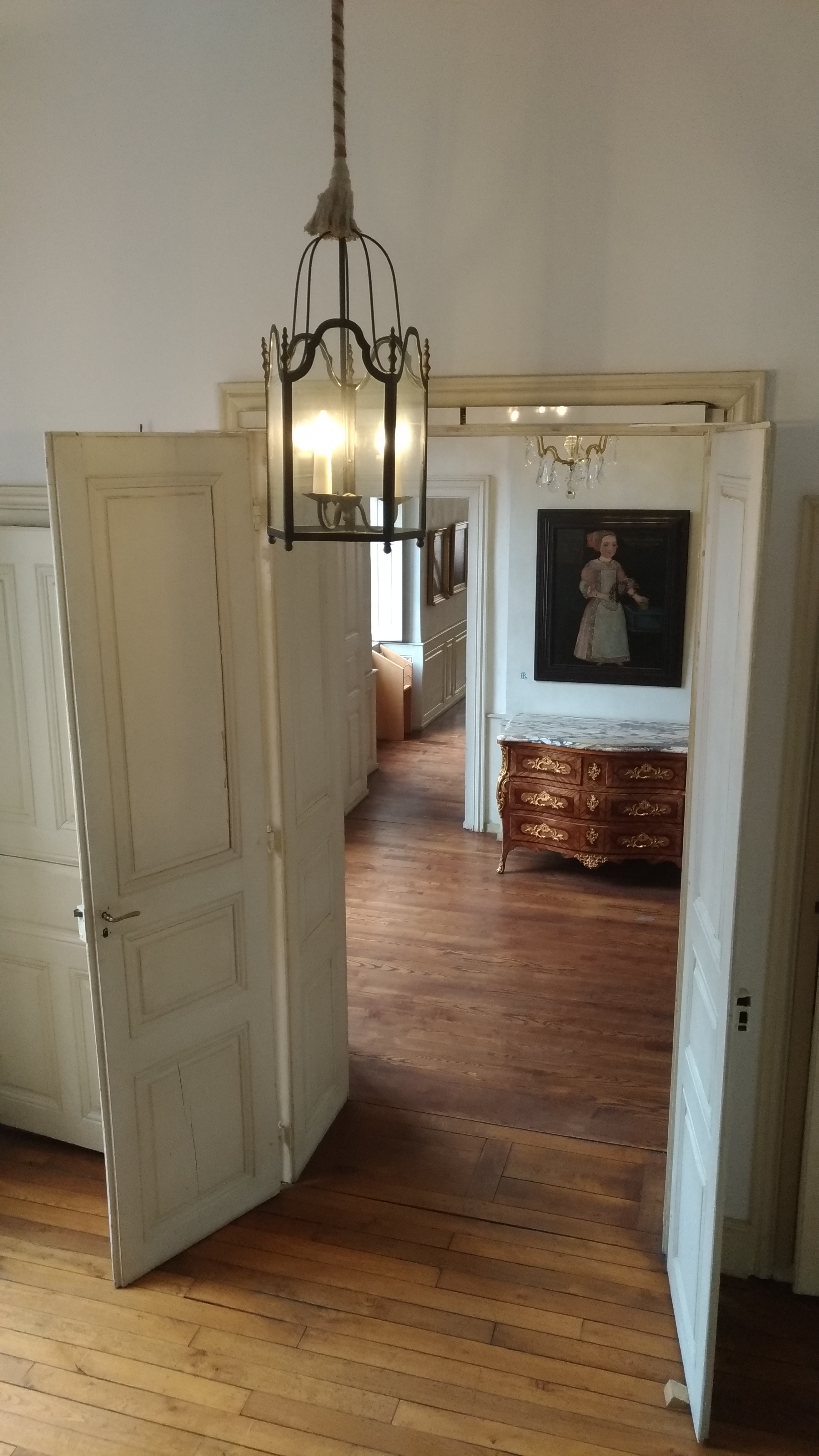
The Bourgogne – Franche-Comté region, is rich of 18 remarkable sites and 9 sites registered on the UNESCO World Heritage List, it kicked off the tourist season and presented the unmissable events of this year 2019.
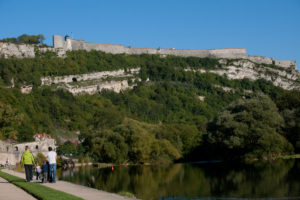 One of the most famous sites is the Besançon Citadelle… Located in an exceptional natural environment, the capital city of this huge reunited Bourgogne Franche-Comté region, Besançon seduces by the charm of its heritage and offers multiple cultural and sporting discoveries. This Citadel overlooking the city, houses one of the UNESCO flagships of the region, signed by the famous french architect Vauban and combines the assets of a city of art and history in a lush greenery bathed by the river and a exceptional heritage bequeathed by its turbulent history. It counts 300,000 annual visitors, night walks are organised in summer with theater groups (photo credits: Bourgogne FC ART).
One of the most famous sites is the Besançon Citadelle… Located in an exceptional natural environment, the capital city of this huge reunited Bourgogne Franche-Comté region, Besançon seduces by the charm of its heritage and offers multiple cultural and sporting discoveries. This Citadel overlooking the city, houses one of the UNESCO flagships of the region, signed by the famous french architect Vauban and combines the assets of a city of art and history in a lush greenery bathed by the river and a exceptional heritage bequeathed by its turbulent history. It counts 300,000 annual visitors, night walks are organised in summer with theater groups (photo credits: Bourgogne FC ART).
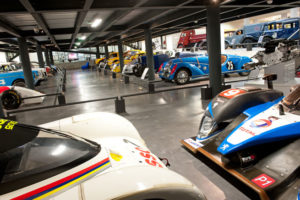 The Peugeot Adventure opened in 1988, to pay tribute to the famous car manufacturer. It is not just an automobile museum but traces the 200-year history of the Peugeot family that began with the design of steel rolling mills in 1810, coffee grinders in 1840, sewing machines in 1867 to the pepper mills that continue to be manufactured in Quingey (photo credits: Aventure Peugeot).
The Peugeot Adventure opened in 1988, to pay tribute to the famous car manufacturer. It is not just an automobile museum but traces the 200-year history of the Peugeot family that began with the design of steel rolling mills in 1810, coffee grinders in 1840, sewing machines in 1867 to the pepper mills that continue to be manufactured in Quingey (photo credits: Aventure Peugeot).
Despite a reserve of 500 cars, 130 are exposed, alternately. What is good to know, 95% of them are still able to roll and even the oldest.
 Among them in particular, the first electric car, the VLV marketed in 1941 and already with 80 km of autonomy! For the more curious, up to 8 people, could visit the assembly line factory of Peugeot cars, located in Sochaux. The Citroën Conservatory, located in Aulnay-sous-Bois, this time in the Parisian region, also offers the possibility to discover 400 exclusive models.
Among them in particular, the first electric car, the VLV marketed in 1941 and already with 80 km of autonomy! For the more curious, up to 8 people, could visit the assembly line factory of Peugeot cars, located in Sochaux. The Citroën Conservatory, located in Aulnay-sous-Bois, this time in the Parisian region, also offers the possibility to discover 400 exclusive models.
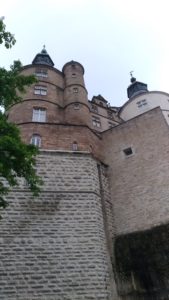
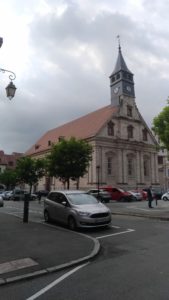 Not so far away, the town of Montbéliard and its Castle of the Dukes of Württemberg, located on a acropolis (our article here), offers a kyrielle of specialties including the sausage of Montbéliard, a multiplicity of cheeses including the Comté, the Cancaillote, also the traditional fabric with checks, the Verquelure for inside the houses and table linen, entirely woven in the area (our other article here).
Not so far away, the town of Montbéliard and its Castle of the Dukes of Württemberg, located on a acropolis (our article here), offers a kyrielle of specialties including the sausage of Montbéliard, a multiplicity of cheeses including the Comté, the Cancaillote, also the traditional fabric with checks, the Verquelure for inside the houses and table linen, entirely woven in the area (our other article here).
This piece can be embellished with a golden thread, for the first time, this year and will be unveiled at the legendary and inevitable Christmas Market, which is held every year and in all colors, from November 23 to December 24, 2019 ( attracting nearly 500,000 visitors annually).
 With each year, a guest of honor, featuring this year, the Savoie region (photo credits of the Market Place: Sylvie Roman). In an other aspect, Montbéliard generates a large contingent of tourism known as “roots”, coming from North America who comes to carry out research on their origins with churches, Protestant temples, menonites, the Genealogy Society.
With each year, a guest of honor, featuring this year, the Savoie region (photo credits of the Market Place: Sylvie Roman). In an other aspect, Montbéliard generates a large contingent of tourism known as “roots”, coming from North America who comes to carry out research on their origins with churches, Protestant temples, menonites, the Genealogy Society.
Many protestants from this region have been invited, in the 18th century, to join the New World to counterbalance the catholic Acadian population. For example, one of the founders of the tobacco industry, the ancestor of Marlboro, Pierre Lorillard was originally from Montbéliard.
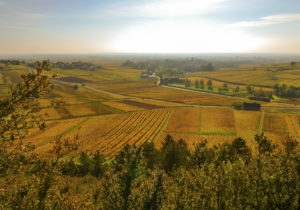
Located at the southern part of the Burgundy region, in the Saône-et-Loire department and the Mâcon city zone, the Grand Site of France of the Solutré Pouilly Vergisson is a famous tourist site. Remarkable from its approach thanks to its unusual landscape composition, it is also the largest garden of this area. This panorama is spread through a strong rural dominance with an economy mainly based on agriculture and especially viticulture.
 The Grand Site of France is a label awarded to territories with a project for the preservation, management and enhancement of the site, responding to the principles of sustainable development, 18 sites were approved by the Ministry of Environment, on the French countrysides. It’s a long process to get this Graal, since it takes around 15 years for the preparation of this prestigious file. The Solutré Pouilly Vergisson includes then a landscape of groves, rock and vineyards; this Grand Site is a “green lung” and an important and accessible heritage promenade of the Greater Montreal area.
The Grand Site of France is a label awarded to territories with a project for the preservation, management and enhancement of the site, responding to the principles of sustainable development, 18 sites were approved by the Ministry of Environment, on the French countrysides. It’s a long process to get this Graal, since it takes around 15 years for the preparation of this prestigious file. The Solutré Pouilly Vergisson includes then a landscape of groves, rock and vineyards; this Grand Site is a “green lung” and an important and accessible heritage promenade of the Greater Montreal area.
Thus the famous ascent of the Solutré Rock, accessible in 45 minutes, so precious and popularized by the former president François Mitterrand, that did it every year (upon with Jack Lang, the director of the IMA Paris, photo credits: Paris Match). An electric bike ride is available, with an arrival in this picturesque panorama spot.
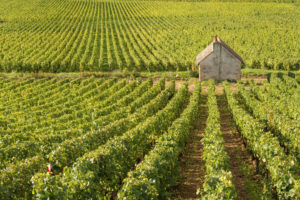 In addition, in the heart of the famous wineries of the Pouilly-Fuissé estate, some parcels will have the chance to be classified inside the Premier Crû label in 2019. An important wine tourism offer is available through the Route 71 – Bourgogne du Sud (a Digital Wine Route), which will soon be inaugurated on May 2019.
In addition, in the heart of the famous wineries of the Pouilly-Fuissé estate, some parcels will have the chance to be classified inside the Premier Crû label in 2019. An important wine tourism offer is available through the Route 71 – Bourgogne du Sud (a Digital Wine Route), which will soon be inaugurated on May 2019.
Another route, the Clogs of Glass, a horseback ride through the vineyards, starting from Chaintré.
Finally, other offers based on well-being activities, are proposed from the top of the Roche de Vergisson (photo credits: Bourgogne FC ART).
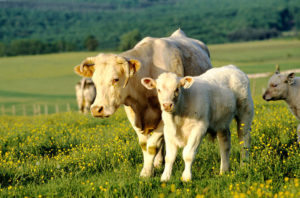 The Charolais-Brionnais region is applying for registering on the UNESCO list. If they succeed, it would be the first hedgerow-related region to be registered.
The Charolais-Brionnais region is applying for registering on the UNESCO list. If they succeed, it would be the first hedgerow-related region to be registered.
Unlike the previous Solutré region based on mostly limestone rock, this time, the Charolais-Brionnais area is based on granitic soil, which has an important role on the quality of the grass, so much appreciated by the multitude of cattle herds that account this facade (photo credits: Saône & Loire ADT).
 We then go to the mountainous area of the Southern Vosges, standing by the Luxeuil-Les-Bains region, including the site of Fougerolles, a remarkable site of the Taste inscribed with Intangible Cultural Heritage in France. This “city of kirsch” is surrounded by cherry groves, with dozens of different varieties of cherry trees.
We then go to the mountainous area of the Southern Vosges, standing by the Luxeuil-Les-Bains region, including the site of Fougerolles, a remarkable site of the Taste inscribed with Intangible Cultural Heritage in France. This “city of kirsch” is surrounded by cherry groves, with dozens of different varieties of cherry trees.
These fruits will be used to make the reputation of the town, namely the many distilleries of Kirsch AOC other variants including the Guignolet, creams, syrups, the two largest are Peureux and Devoille. In addition, absinthe could also be found around there.
 On the other hand, those drinks need fine tableware to be drunk and that’s why we would find the oldest glassworks in France dating from 1475 standing in La Verrerie Rochère. This glassware still blows authentic glass made objects. A hundred of artisans still work there and welcome nearly 70,000 visitors a year (photo credits: Vosges Sud Tourisme).
On the other hand, those drinks need fine tableware to be drunk and that’s why we would find the oldest glassworks in France dating from 1475 standing in La Verrerie Rochère. This glassware still blows authentic glass made objects. A hundred of artisans still work there and welcome nearly 70,000 visitors a year (photo credits: Vosges Sud Tourisme).
 Finally, in the city of Luxeuil-Les-Bains, multiple architectural styles have crossed the centuries, from the Roman period, through the Merovingian period with Saint Colomban, an Irish monk, who evangelized the rural populations of Gaul, Helvetia, Germany, and Italy. You would also find the thermal center (photo credits: Chaîne Thermale du Soleil).
Finally, in the city of Luxeuil-Les-Bains, multiple architectural styles have crossed the centuries, from the Roman period, through the Merovingian period with Saint Colomban, an Irish monk, who evangelized the rural populations of Gaul, Helvetia, Germany, and Italy. You would also find the thermal center (photo credits: Chaîne Thermale du Soleil).
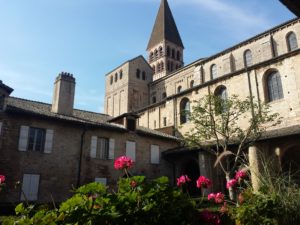 In a southern territory, the city of Tournus, not far from Mâcon, which celebrates the Millennium of the consecration of the Saint Philibert Abbey, which includes some relics of this itinerant personage of which others are also present on the island of Noirmoutier, check our article here (photo credits: Tournus tourism).
In a southern territory, the city of Tournus, not far from Mâcon, which celebrates the Millennium of the consecration of the Saint Philibert Abbey, which includes some relics of this itinerant personage of which others are also present on the island of Noirmoutier, check our article here (photo credits: Tournus tourism).
This abbey, of Romanesque style, illuminated by its pink and ocher stones, consecrated in 1019, and now dedicated to two saints including Saint Philibert and Valerian, becomes a major place of pilgrimage. This enthusiasm is illustrated by a significant tradition of hospitality and accommodation for a village, which rises in quality with two hotels four hotels and four starred restaurants. Tournus is naturally ready to celebrate a millennium that suits it so well. A commemoration that promises to be rich in festivities…
 This Saint-Philibert Abbey has the particularity to have remained particularly intact, but regularly reveals some surprises during the renovation projects of the pavement or the North portal, or the polychromy could be found in this Cancer mosaics of the Ambulatory (photo credits: Tournus tourism).
This Saint-Philibert Abbey has the particularity to have remained particularly intact, but regularly reveals some surprises during the renovation projects of the pavement or the North portal, or the polychromy could be found in this Cancer mosaics of the Ambulatory (photo credits: Tournus tourism).
The monks of Noirmoutier had brought back a technological innovation, resulting in a larger abbey and in fact higher stained glass windows for the time, for greater brightness.
An unparalleled heritage, which 220,000 visitors come to admire each year, at the crossroads between the roads of passages, also revealed by the Roman quarter of Castrum, dating from the 2nd century.
Many events will accompany this anniversary year with an exhibition on the Middle Ages from June 15 to September 22 in the Abbey, a Medieval Festival on August 10 and 11, but also concerts with many posters, including Barbara Hendricks on August 9 at the Abbey, accordionist Richard Galliano on July 28 and many more from the 130 events scheduled for the year, including organ and gospel concerts.
Purchases and reservations in the Tourist Office.
www.millenaire10192019.fr
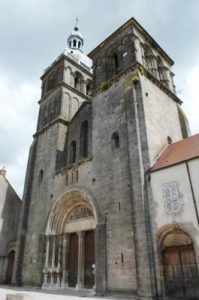 Another majestic birthday of a Holy place, the 900 years of the Basilica of St. Andoche in Saulieu! Built in the 12th century on the ruins of an 8th century abbey. This basilica of Saulieu is one of the most beautiful Romanesque churches of Burgundy. Perfectly renovated in 2007, this 12th century building was built on the location on the sepultures of Saints Andoche, Thyrse and Felix. Churches and abbeys then followed one another until the Carolingian period. The date of 1119 is retained since it is the date on which Pope Calixtus II transferred the relics in the Basilica (photos credits: Bourgogne Tourisme). In order to celebrate this memorable date, the city of Saulieu organizes various events and cultural
Another majestic birthday of a Holy place, the 900 years of the Basilica of St. Andoche in Saulieu! Built in the 12th century on the ruins of an 8th century abbey. This basilica of Saulieu is one of the most beautiful Romanesque churches of Burgundy. Perfectly renovated in 2007, this 12th century building was built on the location on the sepultures of Saints Andoche, Thyrse and Felix. Churches and abbeys then followed one another until the Carolingian period. The date of 1119 is retained since it is the date on which Pope Calixtus II transferred the relics in the Basilica (photos credits: Bourgogne Tourisme). In order to celebrate this memorable date, the city of Saulieu organizes various events and cultural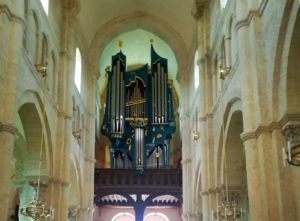 offers throughout the year: concerts, guided tours, a pilgrim walk with musical entertainment (on September 21st), theater plays, exhibitions, the creation of a comic book baptized “the Dream of Charlemagne” by the screenwriter Sandra Amani and the painter Isa Python. The public will also be able to attend organ concerts every Saturday (from June 8th to August 10th, 2019), a sound and light show about the History of the creation of the basilica, inspired by this comic on July, 6th. On the occasion of this anniversary, a digital gallery will also be opened (from May 4th) to present the 60 perfectly preserved chapels of the Basilica (photo credits: Côte d’Or Tourisme).
offers throughout the year: concerts, guided tours, a pilgrim walk with musical entertainment (on September 21st), theater plays, exhibitions, the creation of a comic book baptized “the Dream of Charlemagne” by the screenwriter Sandra Amani and the painter Isa Python. The public will also be able to attend organ concerts every Saturday (from June 8th to August 10th, 2019), a sound and light show about the History of the creation of the basilica, inspired by this comic on July, 6th. On the occasion of this anniversary, a digital gallery will also be opened (from May 4th) to present the 60 perfectly preserved chapels of the Basilica (photo credits: Côte d’Or Tourisme).
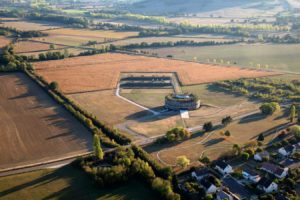 In an other side of the area, back to the antique times… Built in the plain of Alésia, it is a building with symbolic architecture. Inside, an educational trail built around archaeological discoveries and hypotheses, validated by scientists, enrolls Alésia in the context of the Gallic war (from -58 to -51 before Jesus Christ). Visitors will discover the context and the unfolding of the battle of Alesia: the conquests of the Roman army, the revolt of the Gallic leaders, the confrontation of the two armies, the seat of Alesia and the victory of Caesar (photo credits: Alesia.com).
In an other side of the area, back to the antique times… Built in the plain of Alésia, it is a building with symbolic architecture. Inside, an educational trail built around archaeological discoveries and hypotheses, validated by scientists, enrolls Alésia in the context of the Gallic war (from -58 to -51 before Jesus Christ). Visitors will discover the context and the unfolding of the battle of Alesia: the conquests of the Roman army, the revolt of the Gallic leaders, the confrontation of the two armies, the seat of Alesia and the victory of Caesar (photo credits: Alesia.com).
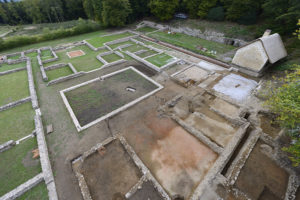 Still in this antique thematics, the site of Bibracte, founded at the end of the 2nd century BC, at the summit of Mount Beuvray, by the Eduen people who had made it their capital. Occupied for nearly a century, this fortified Gallic city, otherwise known as oppidum by the Roman emperor Julius Caesar, was one of the most characteristic and best preserved places of that time, with its ramparts and surrounding districts. about 200 hectares. It is also a place of memory, where Julius Caesar stayed after his victory at Alesia to polish his writings on his Commentaries on the Gallic Wars. Abandoned for two millennia, the city of Bibracte is reborn today thanks to the studious work of archaeologists who contribute, by their expertise, to make it a site conducive to the discovery of an unknown part of our history (photo credits: Bibracte Tourism).
Still in this antique thematics, the site of Bibracte, founded at the end of the 2nd century BC, at the summit of Mount Beuvray, by the Eduen people who had made it their capital. Occupied for nearly a century, this fortified Gallic city, otherwise known as oppidum by the Roman emperor Julius Caesar, was one of the most characteristic and best preserved places of that time, with its ramparts and surrounding districts. about 200 hectares. It is also a place of memory, where Julius Caesar stayed after his victory at Alesia to polish his writings on his Commentaries on the Gallic Wars. Abandoned for two millennia, the city of Bibracte is reborn today thanks to the studious work of archaeologists who contribute, by their expertise, to make it a site conducive to the discovery of an unknown part of our history (photo credits: Bibracte Tourism).
 The Royal Saline of Arc-et-Senans, is a former saltwork (industrial production of salt, “white gold” or salt rock / halite) of the eighteenth century, in activity until 1895, built in Arc-et-Senans in the Doubs in Burgundy-Franche-Comté. Located near the forest of Chaux, it is also called the Royal Saline of Chaux. It is one of the most important salt mines in Europe of its time, and was built by the architect Claude-Nicolas Ledoux, during the reign of King Louis XV, in order to transform the brine, extracted from the salt mines of Salins-les-Bains, transferred to Arc-et-Senans through a 21 km brine pipeline. This year the Royal Saline celebrates the 50th anniversary of the Woodstock Festival, through The psychedelic
The Royal Saline of Arc-et-Senans, is a former saltwork (industrial production of salt, “white gold” or salt rock / halite) of the eighteenth century, in activity until 1895, built in Arc-et-Senans in the Doubs in Burgundy-Franche-Comté. Located near the forest of Chaux, it is also called the Royal Saline of Chaux. It is one of the most important salt mines in Europe of its time, and was built by the architect Claude-Nicolas Ledoux, during the reign of King Louis XV, in order to transform the brine, extracted from the salt mines of Salins-les-Bains, transferred to Arc-et-Senans through a 21 km brine pipeline. This year the Royal Saline celebrates the 50th anniversary of the Woodstock Festival, through The psychedelic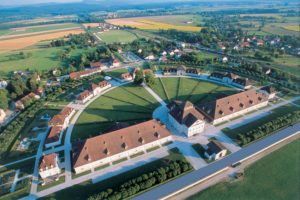 expo, Woodstock Spirit 1969-2019 (from June 8th to August 31st), the Flower Power Garden Festival (from June 8th to October 21st), and the Woodstock Electro Festival (from August 16th to 18th).
expo, Woodstock Spirit 1969-2019 (from June 8th to August 31st), the Flower Power Garden Festival (from June 8th to October 21st), and the Woodstock Electro Festival (from August 16th to 18th).
www.salineroyale.com
For more events in the Bourgogne Franche-Comté region, check the website.



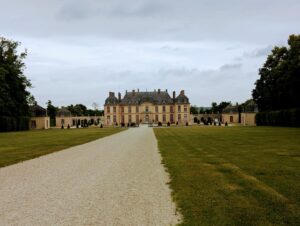
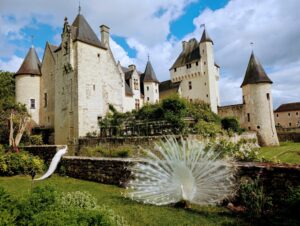
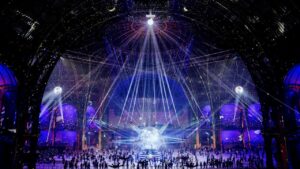



You have brought up a very fantastic details, regards for the post.